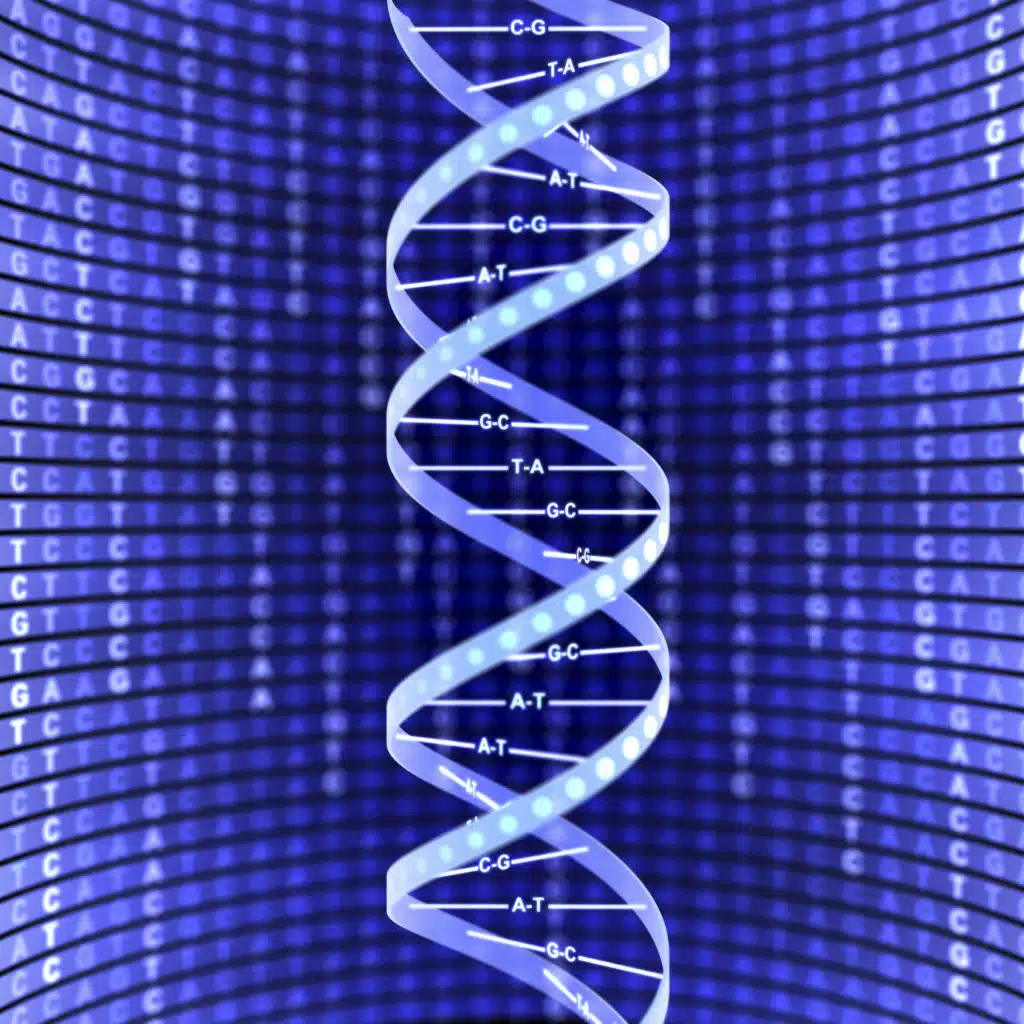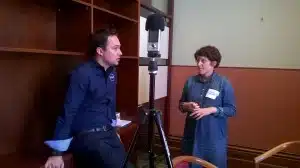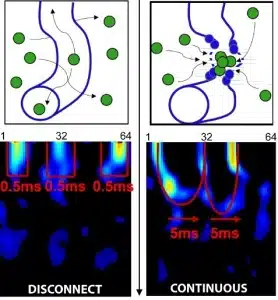Sydney researchers have developed a way to provide a complete picture of DNA repair mechanisms by tracking individual repair factors and how they move to damaged sites in a mess of DNA.
These findings can then be taken advantage of to prevent cancer and the effects of aging.
Research by Dr Elizabeth Hinde, from The University of New South Wales (UNSW), is unravelling the complexities of DNA to provide a clearer picture of how the DNA damage response works.
“If there is a stadium full of people and 1 person walks across it from A to B, you cannot see the individual route they take,” describes Elizabeth. “Whereas, if there were only 1 person in the stadium, you would clearly see how they get from A to B.
“My new method makes it possible to visualise, all at once, how a population of repair factors are moving in a mess of DNA toward a damaged site.”
Our DNA is constantly under attack from the sun, harmful chemicals and other natural and unnatural factors. But we have an inbuilt damage response system which surveys the damage and fixes it quickly.
Failure to repair damaged DNA is what causes cancer and contributes to aging, and we don’t really understand how DNA repair mechanisms work, so we don’t know how to fix them when things go wrong.
Elizabeth explains: “If we can build a complete, navigable map, it will help us understand how cancer develops when these protective measures fail.”
Elizabeth presented her research at Fresh Science New South Wales 2015.
Fresh Science is a national program that helps early-career researchers find and share their stories of discovery. Over 50 early-career researchers nominated for Fresh Science NSW, which was held at the Australian Museum (training) and Three Wise Monkeys Hotel (public challenge event).
New South Wales was supported by the Australian Museum and the University of New South Wales.
Contact: Elizabeth Hinde, The University of New South Wales, e.hinde@unsw.edu.au








 Fresh Science is on hold for 2022. We will be back in 2023.
Fresh Science is on hold for 2022. We will be back in 2023.